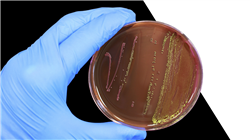University certificate
The world's largest faculty of medicine”
Introduction to the Program
Thanks to this 100% online program you will gain profound knowledge in three core disciplines: Public Health, Primary Care and Community Health, and their interrelationship"

Contemporary Public Health faces multifaceted challenges globally, highlighting the persistence of infectious diseases such as COVID-19, which continues to require vigilance and adaptations in health policies. Meanwhile, non-communicable diseases such as diabetes and cardiovascular diseases continue to increase due to various factors.
This is how this study was born, which will benefit physicians with a specialized, multidisciplinary and holistic specialization, through a broad and integrative vision of the main pillars of Public Health in the 21st century: surveillance, promotion and protection of health and welfare, prevention, foreign health and international health, information systems, communication and research.
Likewise, this academic program will provide professionals with excellent preparation in the scientific and epidemiological method, focused on studying the distribution and determinants of health problems in populations, as well as on developing programs for the prevention and control of health problems. In addition, in the field of community health, we will delve into the reduction of inequalities, designing community prevention and intervention programs.
Finally, global health challenges such as communicable diseases, poor nutrition and limited access to health services will be addressed, focusing on the situation of vulnerable populations such as children, the elderly and people with disabilities. Specialists will also be updated on crisis management and health emergencies, including the response to epidemics, natural disasters and terrorism.
At this juncture, we have designed a university program of the highest quality, fully online to favor the individual needs of students and not have to deal with extra difficulties, such as traveling to a physical center and adjusting to a pre-established schedule. To this is added the implementation of the innovative Relearning methodology, consisting of the constant reiteration of the key concepts for an optimal and organic assimilation of the contents.
You will address relevant topics, such as epidemiology and biostatistics, gaining an in-depth understanding of the distribution and determinants of disease and injury in human populations"
This Professional master’s degree in Public Health contains the most complete and up-to-date scientific program on the market. The most important features include:
- The development of practical cases presented by experts in Public Health and Health Management
- The graphic, schematic and eminently practical contents with which it is conceived gather scientific and practical information on those disciplines that are indispensable for professional practice
- Practical exercises where self-assessment can be used to improve learning
- Its special emphasis on innovative methodologies
- Theoretical lessons, questions to the expert, debate forums on controversial topics, and individual reflection assignments
- Content that is accessible from any fixed or portable device with an Internet connection
You will focus on environmental and occupational health, understanding how the physical and occupational environment affects health, and managing environmental and occupational risks. What are you waiting for to enroll?"
The program’s teaching staff includes professionals from the field who contribute their work experience to this educational program, as well as renowned specialists from leading societies and prestigious universities.
The multimedia content, developed with the latest educational technology, will provide the professional with situated and contextual learning, i.e., a simulated environment that will provide immersive education programmed to learn in real situations.
This program is designed around Problem-Based Learning, whereby the professional must try to solve the different professional practice situations that arise during the course. For this purpose, students will be assisted by an innovative interactive video system created by renowned and experienced experts.
You will analyze health systems and policies, as well as their organization and financing at the international level: all through the best teaching materials, at the forefront of technology and education"

Don't miss this unique opportunity that only TECH offers you! You will address strategies to promote healthy lifestyles, as well as the prevention of chronic and acute diseases at the individual and community level"
Why study at TECH?
TECH is the world’s largest online university. With an impressive catalog of more than 14,000 university programs available in 11 languages, it is positioned as a leader in employability, with a 99% job placement rate. In addition, it relies on an enormous faculty of more than 6,000 professors of the highest international renown.

Study at the world's largest online university and guarantee your professional success. The future starts at TECH”
The world’s best online university according to FORBES
The prestigious Forbes magazine, specialized in business and finance, has highlighted TECH as “the world's best online university” This is what they have recently stated in an article in their digital edition in which they echo the success story of this institution, “thanks to the academic offer it provides, the selection of its teaching staff, and an innovative learning method aimed at educating the professionals of the future”
A revolutionary study method, a cutting-edge faculty and a practical focus: the key to TECH's success.
The most complete study plans on the university scene
TECH offers the most complete study plans on the university scene, with syllabuses that cover fundamental concepts and, at the same time, the main scientific advances in their specific scientific areas. In addition, these programs are continuously being updated to guarantee students the academic vanguard and the most in-demand professional skills. In this way, the university's qualifications provide its graduates with a significant advantage to propel their careers to success.
TECH offers the most comprehensive and intensive study plans on the current university scene.
A world-class teaching staff
TECH's teaching staff is made up of more than 6,000 professors with the highest international recognition. Professors, researchers and top executives of multinational companies, including Isaiah Covington, performance coach of the Boston Celtics; Magda Romanska, principal investigator at Harvard MetaLAB; Ignacio Wistumba, chairman of the department of translational molecular pathology at MD Anderson Cancer Center; and D.W. Pine, creative director of TIME magazine, among others.
Internationally renowned experts, specialized in different branches of Health, Technology, Communication and Business, form part of the TECH faculty.
A unique learning method
TECH is the first university to use Relearning in all its programs. It is the best online learning methodology, accredited with international teaching quality certifications, provided by prestigious educational agencies. In addition, this disruptive educational model is complemented with the “Case Method”, thereby setting up a unique online teaching strategy. Innovative teaching resources are also implemented, including detailed videos, infographics and interactive summaries.
TECH combines Relearning and the Case Method in all its university programs to guarantee excellent theoretical and practical learning, studying whenever and wherever you want.
The world's largest online university
TECH is the world’s largest online university. We are the largest educational institution, with the best and widest online educational catalog, one hundred percent online and covering the vast majority of areas of knowledge. We offer a large selection of our own degrees and accredited online undergraduate and postgraduate degrees. In total, more than 14,000 university degrees, in eleven different languages, make us the largest educational largest in the world.
TECH has the world's most extensive catalog of academic and official programs, available in more than 11 languages.
Google Premier Partner
The American technology giant has awarded TECH the Google Google Premier Partner badge. This award, which is only available to 3% of the world's companies, highlights the efficient, flexible and tailored experience that this university provides to students. The recognition as a Google Premier Partner not only accredits the maximum rigor, performance and investment in TECH's digital infrastructures, but also places this university as one of the world's leading technology companies.
Google has positioned TECH in the top 3% of the world's most important technology companies by awarding it its Google Premier Partner badge.
The official online university of the NBA
TECH is the official online university of the NBA. Thanks to our agreement with the biggest league in basketball, we offer our students exclusive university programs, as well as a wide variety of educational resources focused on the business of the league and other areas of the sports industry. Each program is made up of a uniquely designed syllabus and features exceptional guest hosts: professionals with a distinguished sports background who will offer their expertise on the most relevant topics.
TECH has been selected by the NBA, the world's top basketball league, as its official online university.
The top-rated university by its students
Students have positioned TECH as the world's top-rated university on the main review websites, with a highest rating of 4.9 out of 5, obtained from more than 1,000 reviews. These results consolidate TECH as the benchmark university institution at an international level, reflecting the excellence and positive impact of its educational model.” reflecting the excellence and positive impact of its educational model.”
TECH is the world’s top-rated university by its students.
Leaders in employability
TECH has managed to become the leading university in employability. 99% of its students obtain jobs in the academic field they have studied, within one year of completing any of the university's programs. A similar number achieve immediate career enhancement. All this thanks to a study methodology that bases its effectiveness on the acquisition of practical skills, which are absolutely necessary for professional development.
99% of TECH graduates find a job within a year of completing their studies.
Professional Master's Degree in Public Health
At TECH Global University, we are pleased to present our prestigious Professional Master's Degree in Public Health, a program designed for professionals in the field of medicine who wish to deepen their understanding of key aspects of population health and contribute to the well-being of society. Our graduate program is delivered entirely through online classes, giving you the flexibility to continue your professional development without sacrificing your personal and work commitments. As academic leaders in the industry, we are committed to excellence and innovation in online education. That's why our Professional Master's degree has been designed by experts in the field of medicine and public health, ensuring you receive the highest quality training. When you enroll, you'll have access to a wide variety of educational resources, including online lectures, reading materials, case studies and interactive discussions. In addition, you will be supported by our experienced faculty members, who will guide you through the entire learning process.
Master Public Health with this 100% online Professional Master's Degree program.
During the program, you will explore fundamental topics such as epidemiology, health services management, health promotion, public health policy and epidemiological data analysis. These areas of study will provide you with the knowledge and skills necessary to address the most pressing and complex public health challenges in our society today. In addition, you will have the opportunity to apply your knowledge in a final research project, where you will be able to address a topic of interest in depth and propose innovative solutions to improve the health and well-being of the community. Upon graduating from our graduate program, you will be prepared to play a key role in health promotion and disease prevention in a variety of settings, including health institutions, government organizations, NGOs and international agencies. Take the opportunity to advance your career and contribute to the advancement of public health - enroll today in our Professional Master's Degree of Public Health at TECH Global University of Technology and make a difference in the world!







